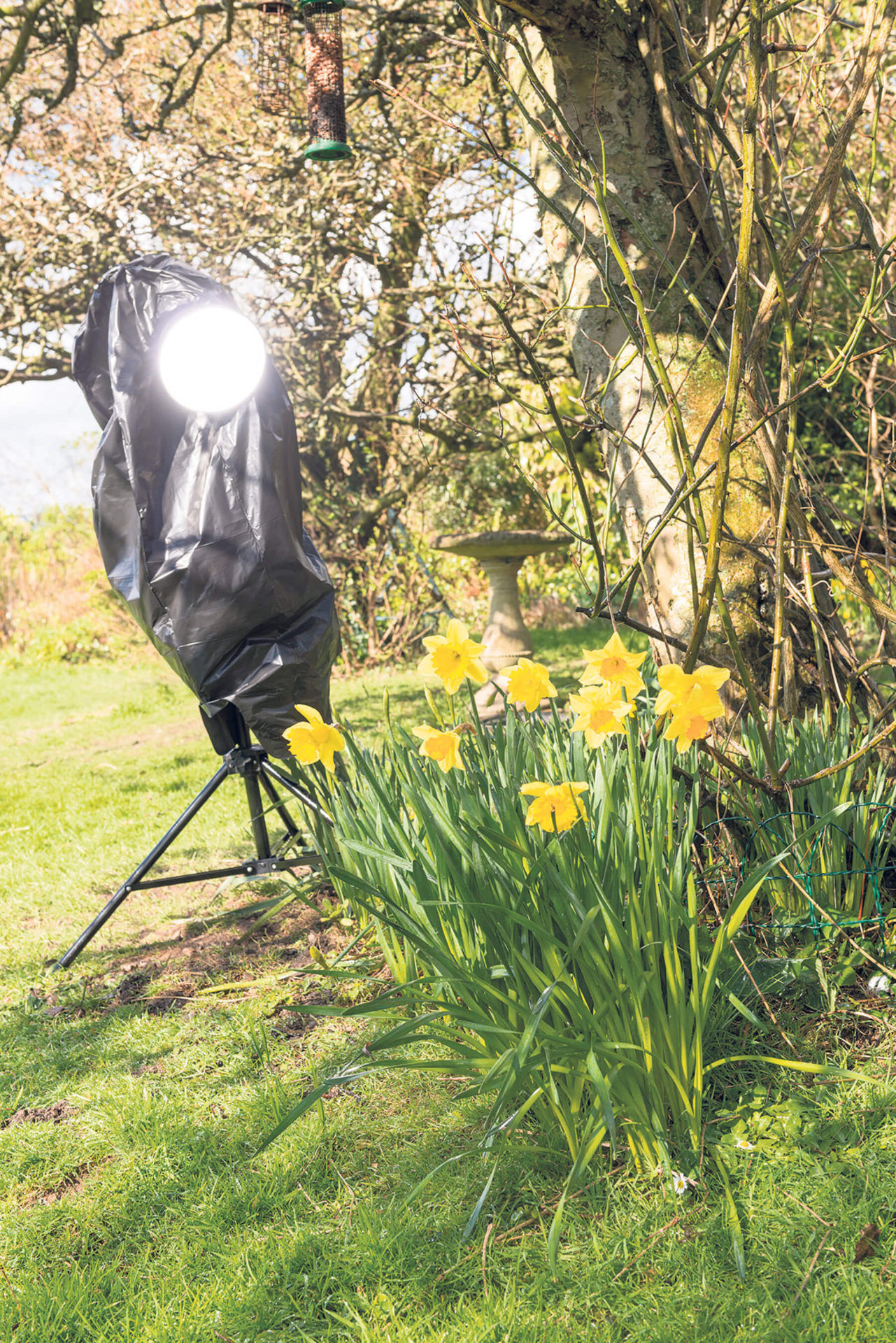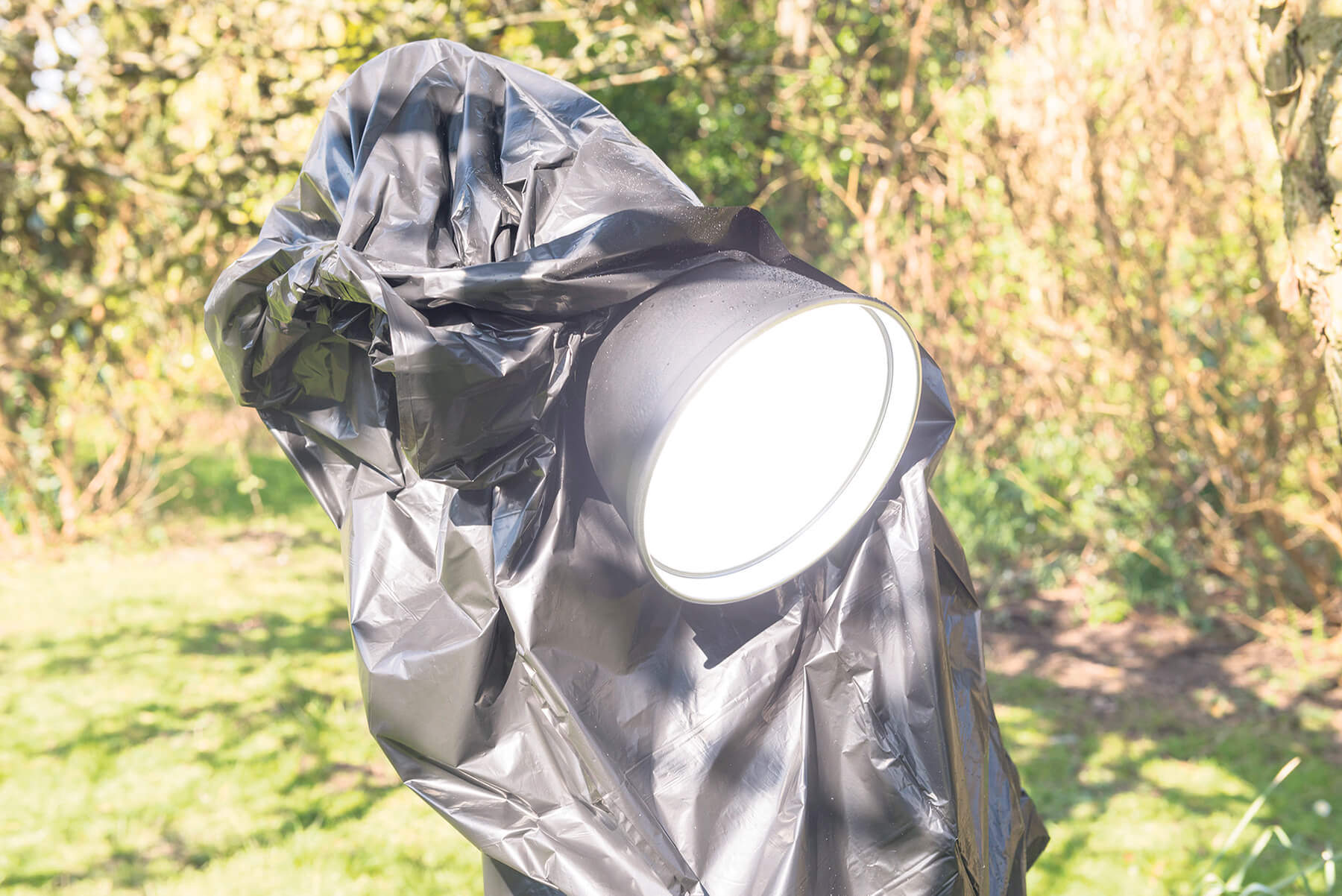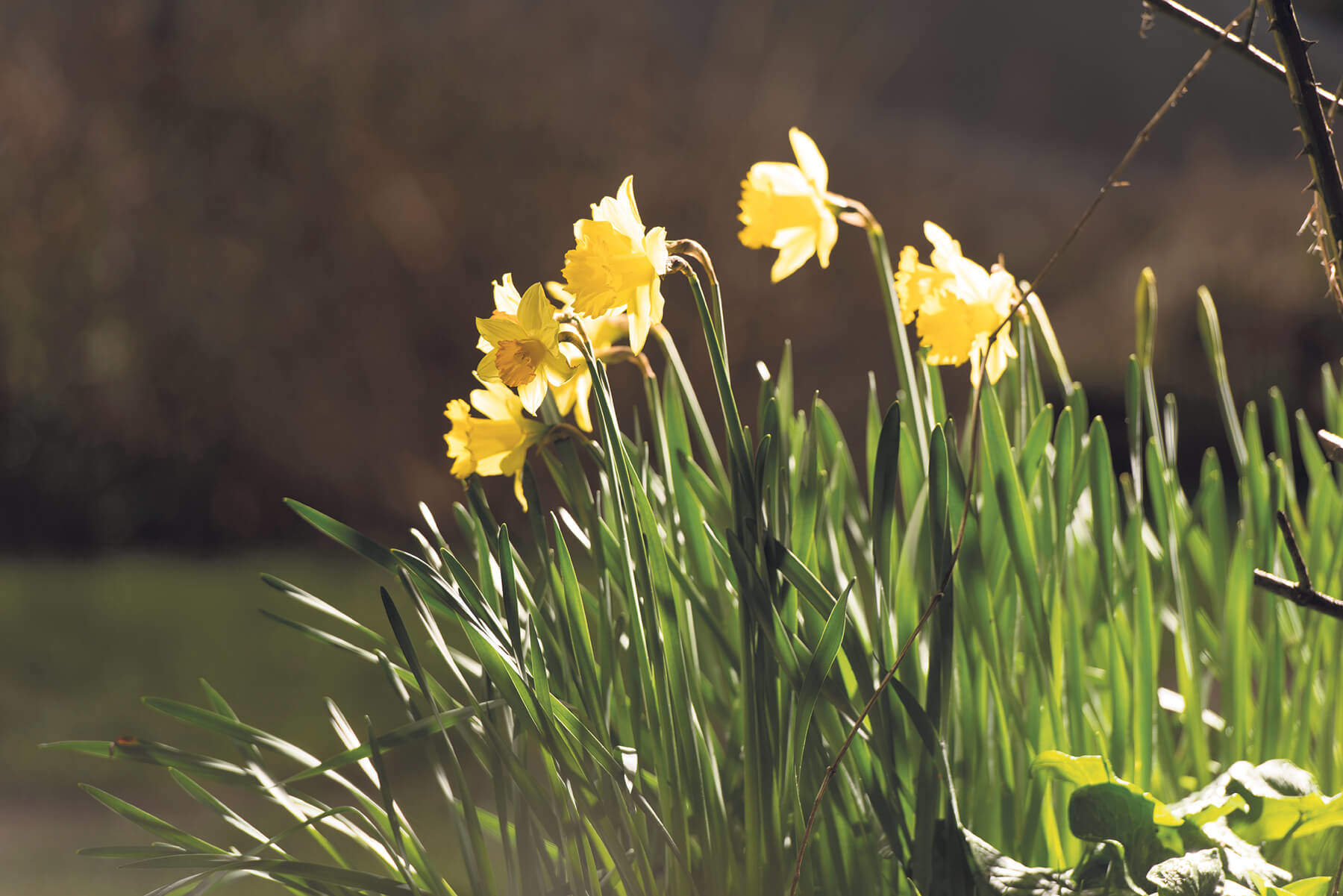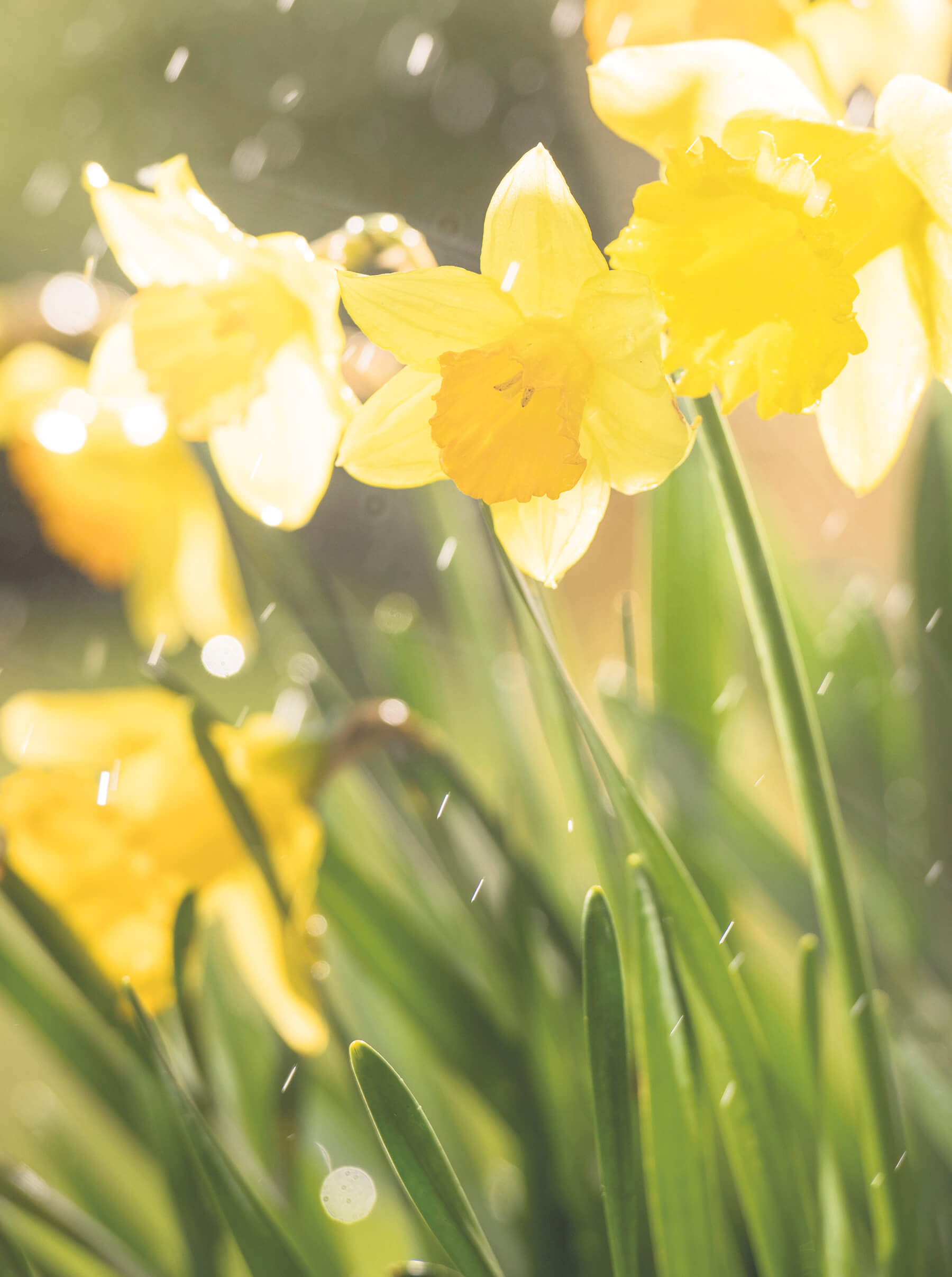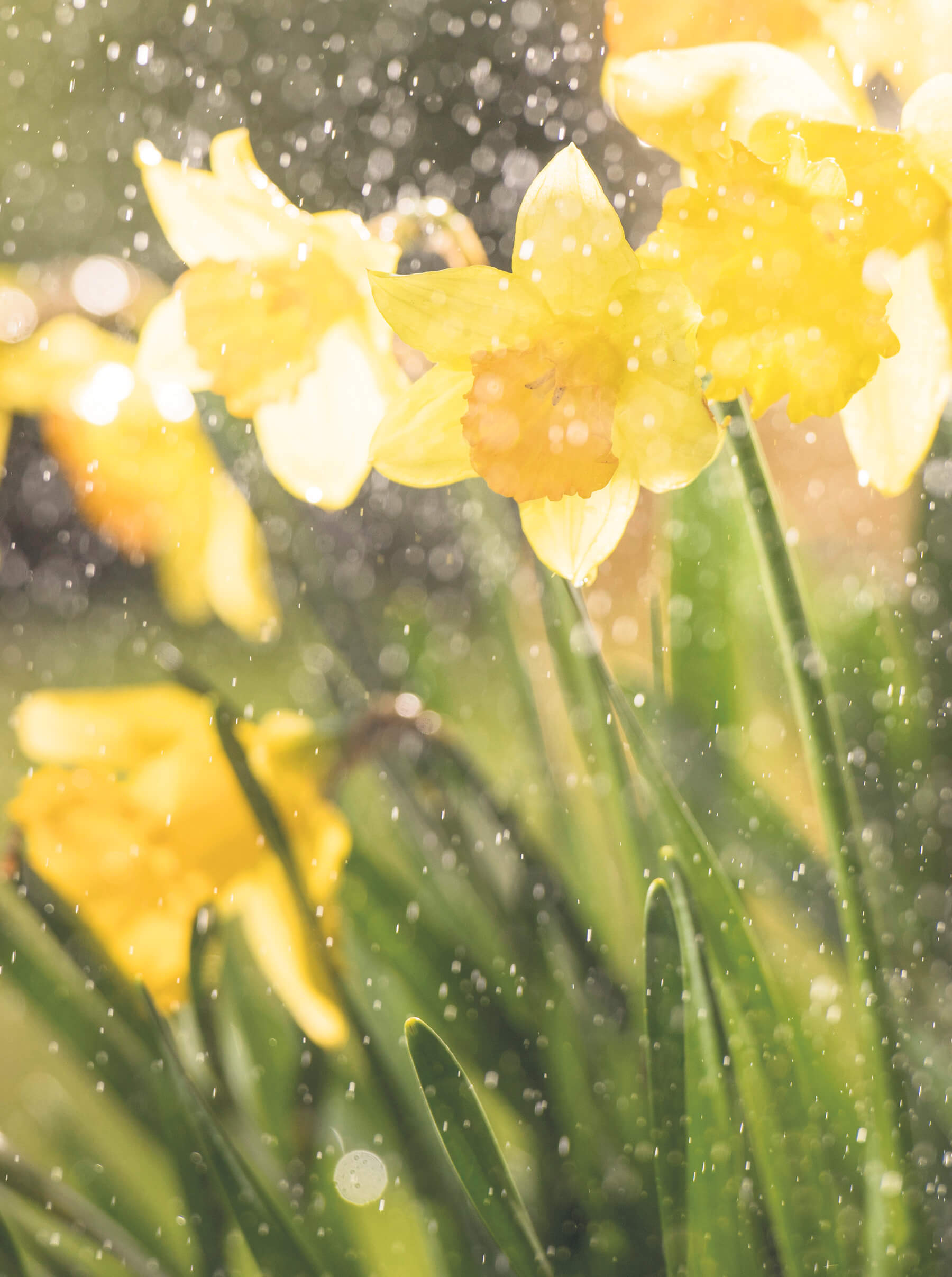
How to use high-speed sync flash
10 minute read
Using high-speed sync flash gives you full control over your flash-lit exposures. Here’s everything you need to know.
Springtime means flowers, sunshine and showers; but capturing them all at once can be difficult. For the daffodils in this feature, I wanted to shoot with a shallow depth-of-field and a fast shutter speed so that any movement from them in the wind was stilled, and the water was frozen into droplets. I also wanted to use some flash to balance the light and add sparkle to the water. That causes some technical problems and if you’ve ever tried a similar shot, using flash in bright ambient light, you’ll know that it usually means compromising your exposure settings or fitting a neutral density filter.
What is flash sync speed?
The main problem for me here is that the shutter speed won’t go as high as I want it to compensate for the wide aperture because it’s limited by the camera’s maximum flash sync speed; that’s the highest shutter speed the camera can use with a flash without causing errors. Typically, this might be a speed like 1/160sec, 1/250sec or 1/320sec. Beyond it, the flash either won’t fire at all (if it’s connected to the camera) or if it does you’ll get problems; the flash can be too weak, or more commonly it won’t seem to cover the whole of the frame, giving a banded look to the light. The latter error can look like a dark bar across one side of the image, and while this is obvious if you’re shooting against a plain subject, it can be less obvious in real-world situations, showing up more like an intense graduate filter.
Typically, when using a hotshoe-mounted speedlight or when the flash is fired by an intelligent wireless method, you won’t be able to set a speed faster than the maximum sync at all, with the shutter firmly locked, even in manual mode. That leads to overexposure, only correctable by closing the aperture (or fitting an ND); fine in some cases, but not a good route if you want a shallow depth-of-field and frozen movement as I did.
Click the images to see a larger view
High-speed sync flash
The alternative is using high-speed sync (HSS) flash, a system provided on certain speedlights and studio flash heads that lets you shoot at a wider range of shutter speeds, albeit with some limitations (we’ll come on to these later). Using HSS means you can shoot much more easily in bright ambient conditions, and use wider apertures to blur the background and faster shutter speeds to freeze movement.
For the daffodils image, which was shot in a back garden (hence the need to blur a distracting background), I framed up so that the sun was about 90° from my position. Daffodils will turn to follow the sun throughout the day, so if you want to see their faces in the pictures, the sun will always be on the same side as you. What that means is no backlighting effect, hence one of the requirements for using a flash.
First I needed to calculate the exposure for the ambient light, which of course is done automatically in aperture-priority (A or Av) mode; dialling in the aperture I wanted (f/4) at ISO 100 gave me a shutter speed of 1/1000sec. This is well beyond the maximum flash sync speed of the Nikon D810 I was using (1/250sec), so if the flash was connected in the normal fashion at that point, and a shot was taken, it would be overexposed by two stops and much too bright. As discussed, I could have stopped down the aperture here, setting it to f/8 and thereby slowing the shutter to 1/250sec in return. However, that wasn’t an option.
Setting the HSS mode
Instead, I needed to activate the HSS mode of the camera and flash. On the Nikon D810 (and similar Nikon DSLRs), this is done from the Custom Setting Menu, in the Bracketing/flash menu, Flash Sync Speed sub-menu (e1). Using the 1/320 s (Auto FP) setting means you can now shoot in HSS mode with compatible flashes. However, in aperture-priority mode, the shutter speed is still limited, so I needed to switch to manual mode (M) and re-enter the settings required for the shot (1/1000sec, f/4, ISO 100).
Next I positioned and switched on the flash – an Interfit S1 head – placing it about 4ft behind the daffodils to give the desired backlighting. I added a spill-kill reflector at this stage to direct the light and stop it flaring into the lens. To use the HSS functions of this flash I also added its accompanying S1 Remote to the camera’s hotshoe and switched the flash’s mode to manual (from TTL). After a couple of test shots, I decided the best power setting was at 6.0 (the equivalent of ¼ power), which added enough of a highlight to the flowers without overexposing their edges.
Next, I needed to add some water, which came from a garden hose, held above the flowers rather than waiting for the weather. This meant protecting the flash, so I wrapped the head in a bin liner (not something you should do for extended periods, especially as HSS flash creates a lot of heat, but fine for a few shots and better than a wet flash). Fortunately, the power is fully controllable from the remote, so there was no need to leave any part of the S1 flash head uncovered.
Click the images to see a larger view
Freezing the water
With the flash firing, and the water running, another test shot was required to confirm that the ‘raindrops’ were sufficiently frozen. At the 1/1000sec shutter speed there was still a little too much movement for my liking, so I increased the shutter speed to 1/2000sec. Not wanting to change the aperture setting, this meant raising the ISO to 200 to get the same ambient exposure level.
Due to the method of high-speed flash used by the Interfit S1 – a series of rapid pulses which works like continuous light so not visible to the naked eye – no adjustment is required in the flash power, because it responds just like the ambient light. However, the range is affected and the faster the shutter speed you use, the closer the flash will need to be to the subject to get the desired effect.
Magnification and shutter speeds
Shutter speed is very important in freezing the movement of the water in this daffodil shot, but the speed you need is governed by the rate of the water and the magnification of the lens you’re using. You can’t do much about the former, but try shooting at different focal lengths and you will notice some changes in the shutter speed it takes to stop the droplets. This is simply down to how far the water moves across the frame in the time the shutter is open; at a wide-angle and low magnification, it won’t be far – possibly just a few pixels – so you might get away with a slower shutter speed; but longer focal lengths and higher magnifications will show more movement and therefore faster speeds are required.
In the second set of images – those with the orchid – I shot indoors, against a window to get the backlighting, while using the Interfit S1 as the main light. Here, a macro lens was used along with a water spray to generate the droplets, and because of the hugely enlarged subject, the shutter speed needed to be faster; 1/4000sec. Going back to the power of the flash being reduced as the shutter speed rises, this also meant that the S1 needed to be closer, at around 2ft.
Click the images to see a larger view
High-speed flash sync explained
Flash sync problems are caused because of the way the shutter in your DSLR or CSC works. The design that’s common to the vast majority of cameras is called a focal plane shutter and it has two curtains, one of which controls the start of the exposure (called the ‘first curtain’), and one at the other the end (called the ‘second’ or ‘rear curtain’). Modern cameras have vertical-travel shutters; older film cameras have horizontal-travel shutters.
For an even exposure (see below), the entire sensor needs to be revealed by the curtains at the point the flash is fired; ie. the first curtain must be completely open before the second begins to close. The fastest shutter speed where this happens is called the flash sync speed or X-sync.
At shutter speeds beyond the maximum flash sync speed this isn’t possible because, to create the short exposure, the second curtain is closing over the top of the sensor before the first curtain has revealed the bottom. Therefore only a small part of the sensor is exposed at any time. Imagine the flash going off at that moment and you can see how a dark band is caused – that part of the sensor wasn’t uncovered at the point the flash was fired.
High sync modes get around this in several ways. The most common is high-speed sync (HSS), and it’s found in many speedlights and some studio-style heads, like the Interfit S1 used here. In HSS mode, the flash fires a series of very short pulses throughout the exposure, rather than the normal single flash. This creates something that’s very similar to a continuous light source, so each part of the sensor is lit throughout and no shadow is created.
The issues of HSS mode are in terms of power and range; the flash often needs to be closer to the subject as output is less and, just like available light, brightness drops as the shutter speed increases. Additionally, lots of battery power is used to generated the thousands of pulses.
Click the images to see a larger view
Although it’s shot indoors, the picture above uses the same principles as the exterior shot. It’s a bit easier to practise inside, so give it a try when you’re starting out with HSS flash. In this set-up, the backlighting comes from the natural light through the window, and the flash is used as the key light. In the behind-the-scenes shots you can see how the effect is created using a water spray instead of a hose or rain, so it’s easier to control (and avoids getting wet). With the 1/4000sec shutter speed underexposing the natural light slightly for a more studio-style look, the Interfit S1 remote is set to manual mode, and camera’s flash sync speed set to 1/320sec Auto FP and finally the HSS mode’s flash power is controlled to correctly expose the orchid and the water – its lowest setting of 5.0.
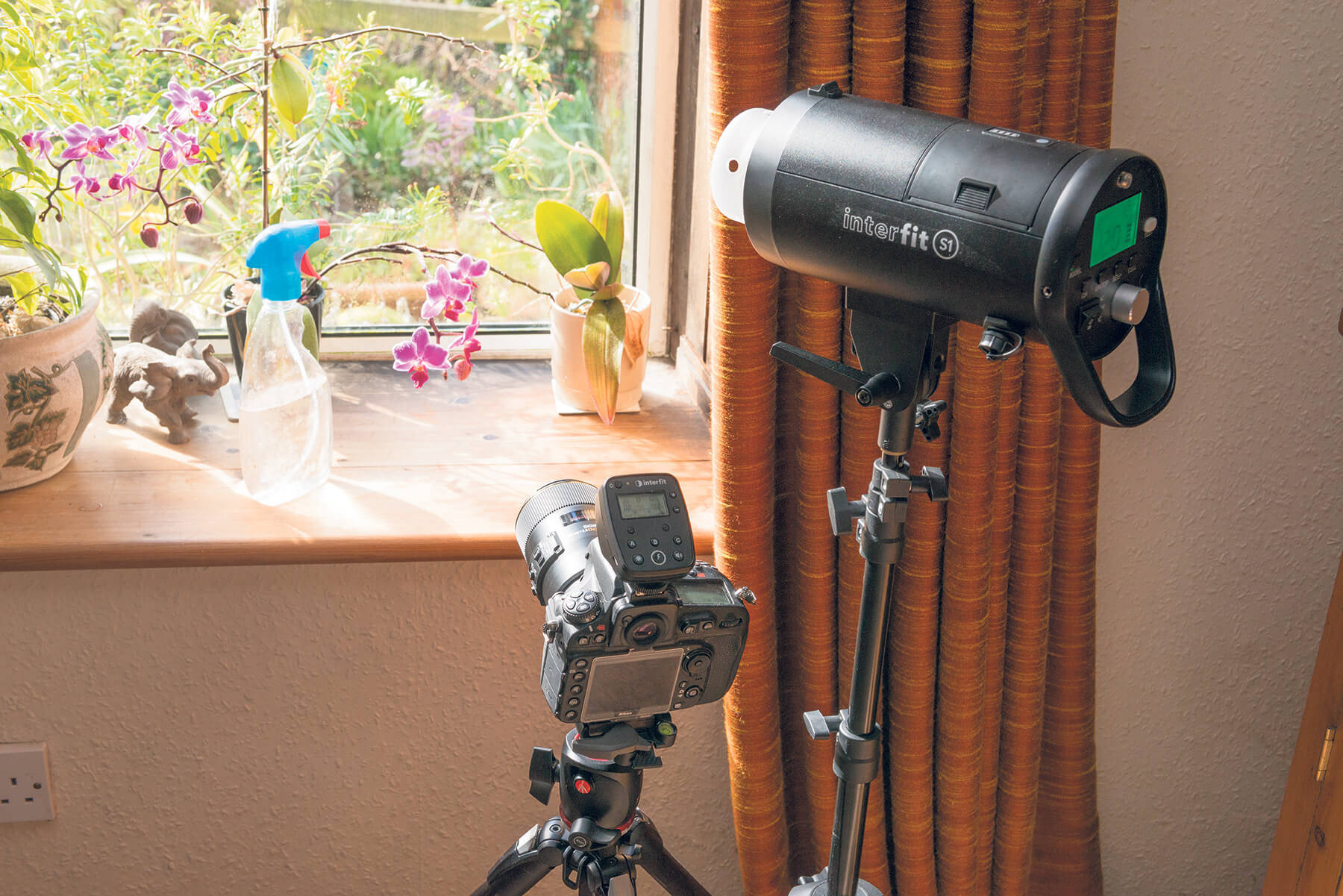
For more like this, visit our Inspiration section, where you’ll find a wide variety of tips, techniques and guides.
If you want to get in touch, you can find us on Instagram, Twitter or Facebook.
Don’t forget to sign up to receive our newsletter below, and get notified about the new issue, exclusive offers and competitions.
As featured in issue 30 of Photography News.

